MORAVIAN REVIVAL OF 1727 (expanded version)


Moravia and Bohemia made up what is today known as the Czech Republic, also known by its short-form name Czechia
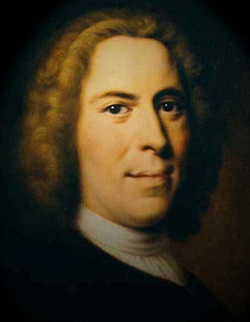
Nicolaus Zinzendorf
Count Nicolaus Zinzendorf
In May 1722, at age 22, Zinzendorf purchased the estate of Berthelsdorf from his grandmother. He intended to make this a place for the preaching of the Gospel to the peasants, and he installed John Andrew Rothe, as the pastor of the village church.
As religious refugees from Bohemia, Moravia, and Silesia, fleeing Roman Catholic persecution, moved into the area, Zinzendorf welcomed them to construct a new village about 2 miles to the southwest of Berthelsdorf, and this location was given the name Herrnhut (Herrn Hut means “the Lord’s watchful care,” or “the Lord’s protection.”). The construction of Herrnhut began on June 17, 1722 with the felling of the first tree.
The Moravian refugees considered themselves the spiritual descendants of Bohemian reformer John Hus. For several generations these people had been seeking a place of escape from intense persecution. Many Moravians had already died for their faith, and others had been imprisoned and tortured.

Unity
From 1722 to 1727, this small community in Herrnhut grew to 220 people, including 87 children, living in 30 different homes. The community, being made up of a number of Protestant sects (Baptists, Presbyterians (Reformed), Lutherans, Schwenkfelders, and Moravians), were struggling with dissension, bitterness, and judgmentalism. Each group’s doctrinal distinctives were breaking down the unity.
Zinzendorf, working to address the conflicts, began visiting homes for prayer. Then he called the people together to study the Scriptures, as it pertains to living together in unity.
Following prayer and the study of Scriptures, there was an agreement drawn up, called the Brotherly Agreement. This was a document with rules that those living in the community would agree to, and it was signed by the members living there on May 12, 1727.
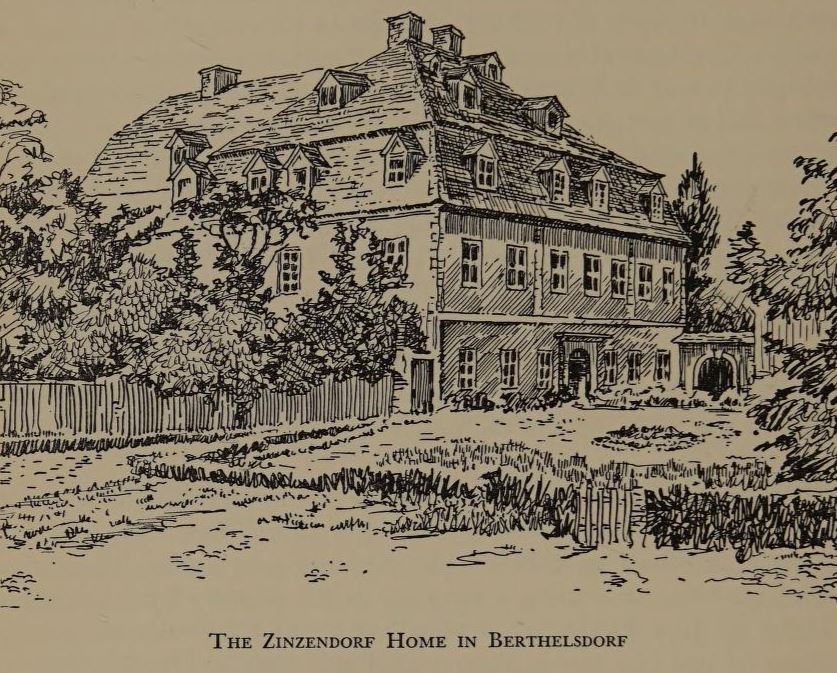
Extraordinary Prayer
The Brotherly Covenant brought a measure of unity, and the debates stopped, yet they still didn’t “have fervent love for one another” (1 Pet. 4:8).
On July 16th, many of the community began praying together as never before.
All-Night Prayer Gathering
On August 5, 1727, Zinzendorf and about 14 others spent the night in prayer, seeking God for an outpouring of the Holy Spirit, and it was said that at midnight, “great emotion prevailed.”
Revival among Children
It was on August 6, 1727, that a 11-year-old girl, Susanne Kuhnel, had an encounter with God after spending three days in prayer. Following her personal revival, and her testimony being given to other children, more children stepped into the revival that she was experiencing.
Preliminary Outpouring
This is an account of what occurred on August 10 while the pastor of the Berthelsdorf church (John Andrew Rothe) was conducting a meeting at about noon in the village of Herrnhut:
While Pastor Rothe was holding the meeting at Herrnhut, he felt himself overwhelmed by a wonderful and irresistible power of the Lord, and sank down into the dust before God, and with him sank down the whole assembled congregation, in an ecstasy of feeling. In this frame of mind they continued till midnight engaged in prayer and singing, weeping and supplication.
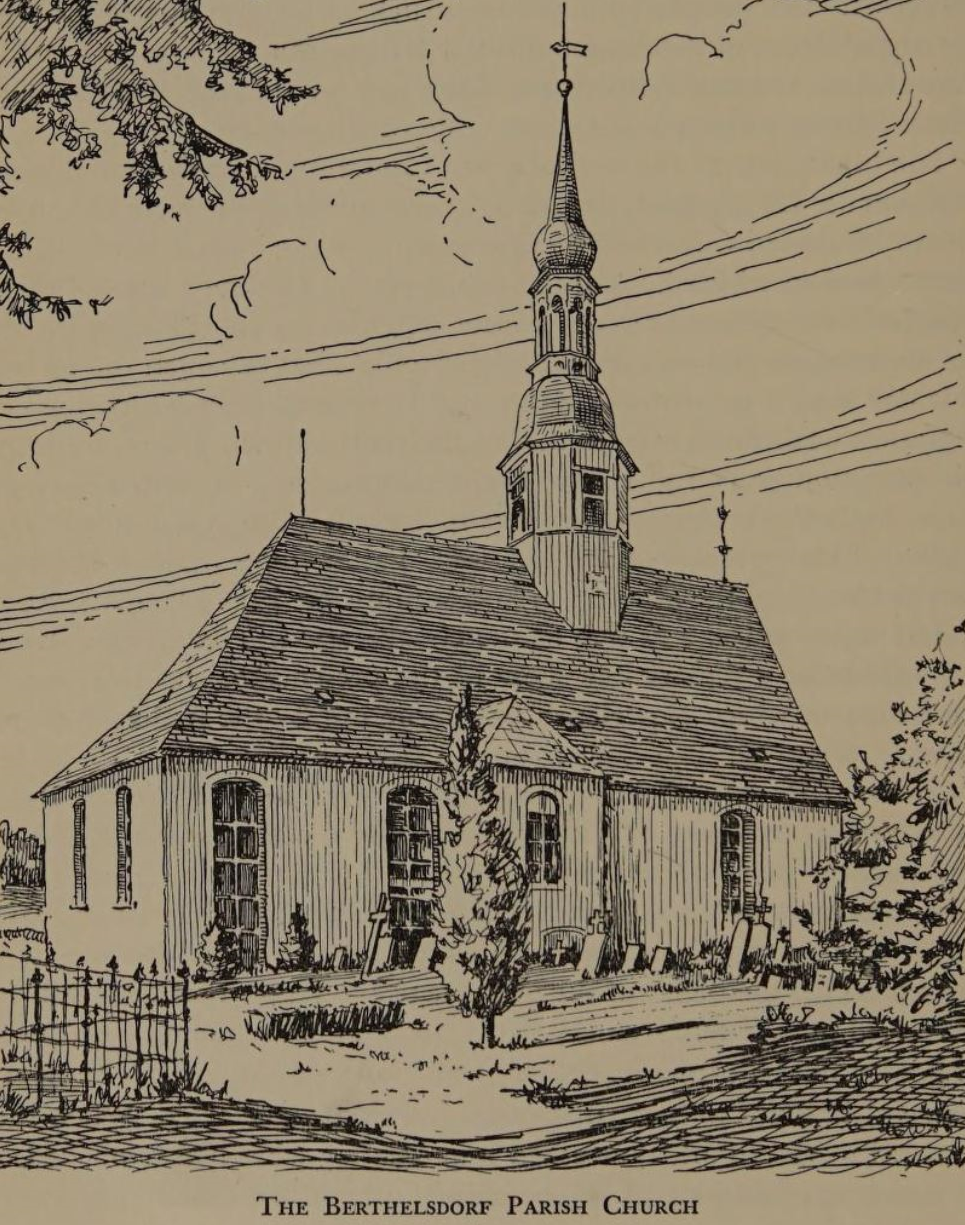
The Moravian Pentecost
On Wednesday, August 13, 1727, the community met in the church in Berthelsdorf, where Zinzendorf preached a sermon about the cross and the lamb of God, and then as the congregation was about to take communion, “the Holy Spirit fell upon them.” It was such a powerful visitation of the Holy Spirit that many referred to it as “a Moravian Pentecost.”
Of that occasion, a Moravian historian documented:
We saw the hand of God and His wonders, and we were all under the cloud of our fathers baptized with their Spirit.
The Holy Ghost came upon us and in those days great signs and wonders took place in our midst.
From that time scarcely a day passed but what we beheld His almighty workings amongst us.
A great hunger after the Word of God took possession of us so that we had to have three services every day, viz. 5.0 and 7.30 a.m. and 9.0 p.m.
Every one desired above everything else that the Holy Spirit might have full control.
Selflove and self-will, as well as all disobedience disappeared and an overwhelming flood of grace swept us all out into the great ocean of Divine Love.
Zinzendorf, commenting on this moment, said that it was,
A sense of the nearness of Christ bestowed, in a single moment, upon all the members present; and it was so unanimous that two members at work twenty miles away, unaware that the meeting was being held, became at the same time deeply conscious of the same blessing.
The Saviour permitted to come upon us a Spirit of whom we had hitherto not had any experience or knowledge. Hitherto WE had been the leaders and helpers. Now the Holy Spirit Himself took full control of everything and everybody.
Though we have no detailed records of what actually occurred on that Wednesday morning in the Berthelsdorf church, we do have one record that says that after they left the church at noon,
[the people] hardly knowing whether they belonged to earth or had already gone to heaven.
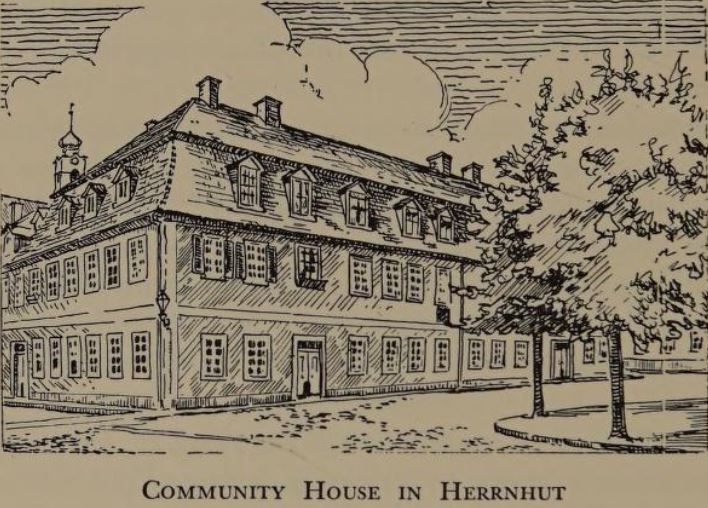
Outpouring of the Spirit Resulted in Increased Prayer
The outpouring of the Holy Spirit on August 13 did not end with its fading memory or it being a mere emotional encounter with God; it resulted in enhanced passion for God’s glory to spread, and it began through increased prayer and worship.
Children’s Prayer Movement
After August 13, and until the 26th of that month, there was a powerful movement of prayer that commenced among the children. One account reads like this:
There was such a movement in the fellowship, that the bushes on the Hutberg [hill] were filled with brothers, sisters, and children day and night, who on their knees or prostrate, prayed, wept and sang.
Another eyewitness said;
The spirit of prayer and supplication at that time poured out upon the children so powerful and efficacious that it is impossible to give an adequate description of it in words.
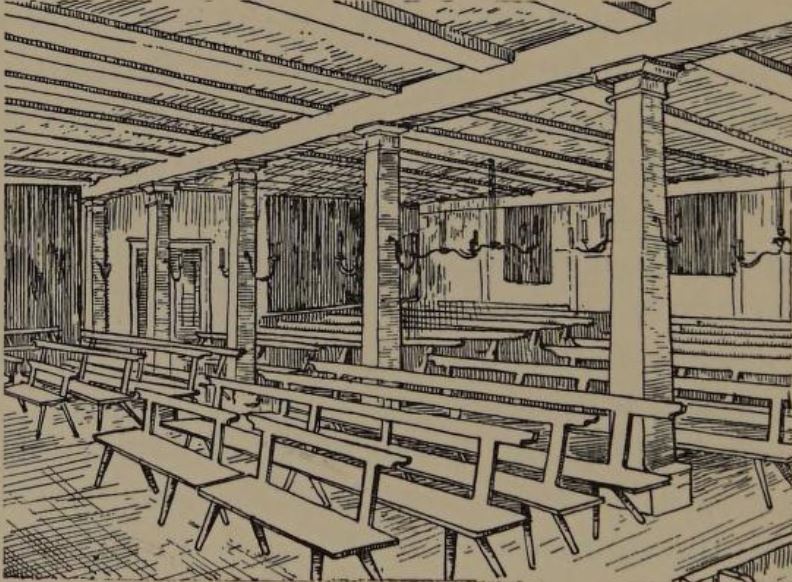
Place of worship in the Herrnhut community house
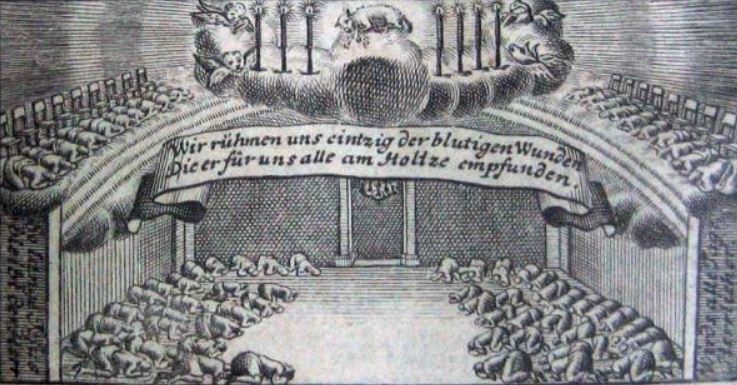
Moravians Praying
24-Hour Prayer Watch—Fires Are Never to Go Out
Following these evidential workings of the Holy Spirit, Zinzendorf heard the Lord speak to him, telling him that the fire on the altar must never go out, and that the community must respond to Christ’s great sacrifice through nonstop prayer, day and night.
On August 27, 1727, a 24-hour prayer ministry was started, involving 24 men and 24 women, with one person committing to pray one hour every day. This was called the “Hourly Intercession.”
The number of those praying grew to 77, with them praying in rotations every day, and this lasted for 100 years. The times of prayer weren’t always in one location, but there were those that would join together with others and pray in twos or threes, at different locations.
Children Had Their Own Rotation
The boys and girls, like the adults, had a similar plan of praying in rotations.
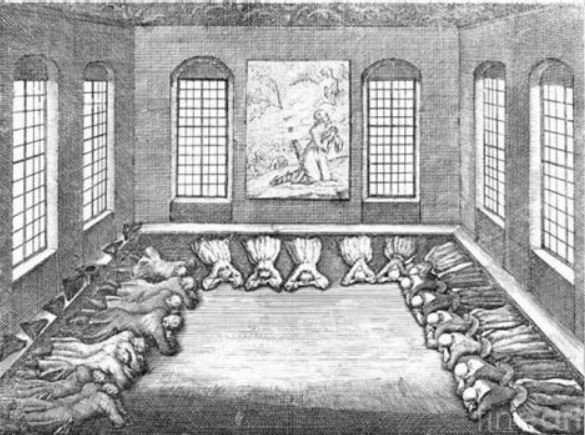
Moravians Praying
Prayer Points
Zinzendorf met weekly with these intercessors to share prayer points, to keep them focused on what to pray for. These prayer points were primarily kingdom-focused, rather than praying for individual’s needs. They would pray for communities and missionaries, that the Gospel would go forth in power.
Missions Movement
Even though the English Baptist missionary, William Carey, carries the title of “Father of Modern Missions,” by the time Carey departed for his missions ministry in India in 1793, the Moravians had already spent 60 years sending out over 100 missionaries from Herrnhut. In fact, the Moravians had sent out over 100 missionaries in only 25 years, beginning in 1732. What makes this even more remarkable is that the congregation from Herrnhut never exceeded 300 people.
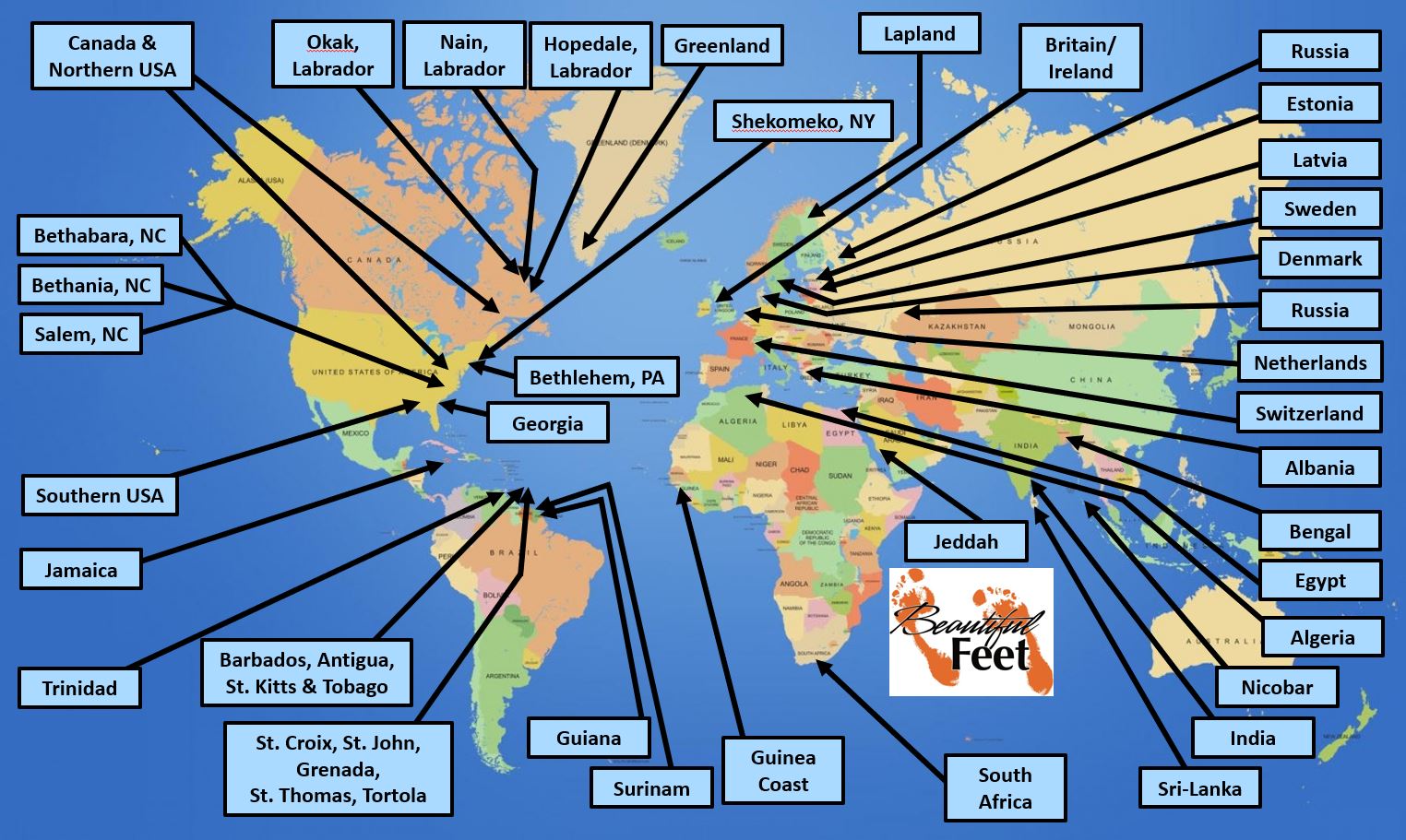
Some of the mission stations established by the Moravian Church during the 1700s
The Moravian’s Influence on Methodists (and others)
These few paragraphs show the influence the Moravians had on the emergence of the Methodist denomination, as well as on the ministry of George Whitefield.
In 1736, John Wesley, and his brother Charles, sailed to America as Anglican missionaries. During the trip there they witnessed the calm assurance of the Moravians during a terrible storm. Back in England, on May 3, 1738, Charles Wesley, even though he had been an Anglican, placed his faith in Christ following a conversation with the Moravian, Peter Boehler. A few weeks later John Wesley also placed his faith in Christ.
Fetter Lane Outpouring
The Moravian Peter Boehler had established the Fetter Lane Society in London. It was on December 31, 1738, that about 60 of these Moravians, who were joined by John & Charles Wesley, George Whitefield, and several other Methodists and Anglican priests, met together for a Watch Night Service.
Writing about that Watch Night Service, John Wesley remarked:
About three in the morning, as we were continuing instant in prayer, the power of God came mightily upon us, insomuch that many cried for exceeding joy, and many fell to the ground. As soon as we were recovered a little from that awe and amazement at the presence of His Majesty, we broke out with one voice “We praise Thee, O God; we acknowledge Thee to be the Lord!
Herrnhut, a Spiritual Retreat Center
People from throughout Europe made trips to Herrnhut, seeking to be saved or to be baptized in the Holy Spirit and fire.
John Wesley’s visit to Herrnhut was typical of thousands. Commenting on his visit, Wesley wrote:
God has given me at length the desire of my heart. I am with a Church whose conversation is in Heaven; in whom is the mind that was in Christ, and who so walk as He walked.
I would gladly have spent my life here; but my Master called me to labour in another part of His vineyard.
The Writing of Many Hymns
As occurs in all great revivals, the Moravians have been known for the writing of many hymns and spiritual songs—Count Nicolaus Zinzendorf himself writing about 2,000 of them.
Source
► A History of the Moravian Church by J.E. Hutton
► Count Nicolaus Ludwig Von Zinzendorf’s Theory for Missions by Larry A. Roth
► Count Zinzendorf by John R. Weinlick
► Founders of Christian Movements by Philip H. Lotz
► Great Men of the Christian Church by Williston Walker
► History of the Moravian Church by Wikipedia
► Moravian Church by Wikipedia
► Power from On High by John Greenfield
► Reformation and Revival in Eighteenth-Century Bristol by Jonathan Barry
► Story of the Moravians by Light of the World Prayer Center
► The Moravian Revival of 1727 by Chet Swearingen
► The Reformation of the Sixteenth Century by Roland H. Bainton
► The Ten Greatest Revivals Ever by Elmer Towns
► The Unitas Fratrum by Edmund De Schweinitz
Return to List of Revival Stories
Chet & Phyllis Swearingen:
Office: (260) 920-8248
romans1015@outlook.com
Beautiful Feet
P.O. Box 915
Auburn, IN 46706

